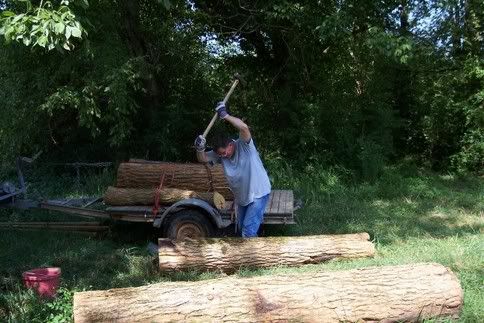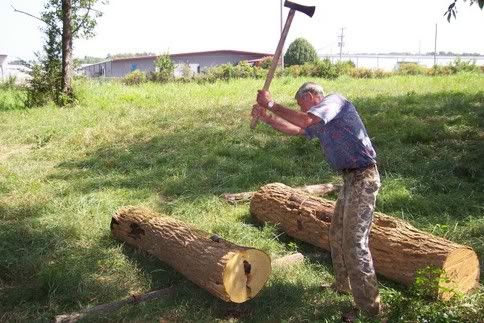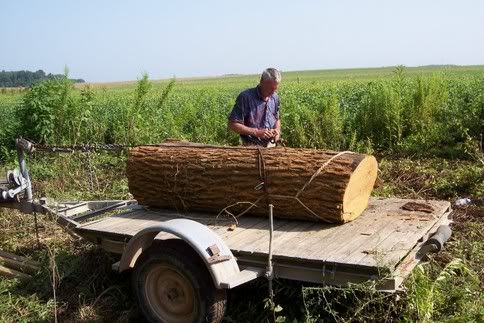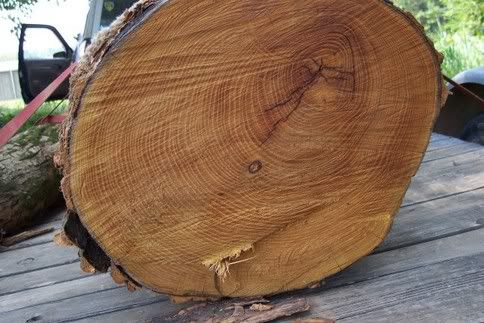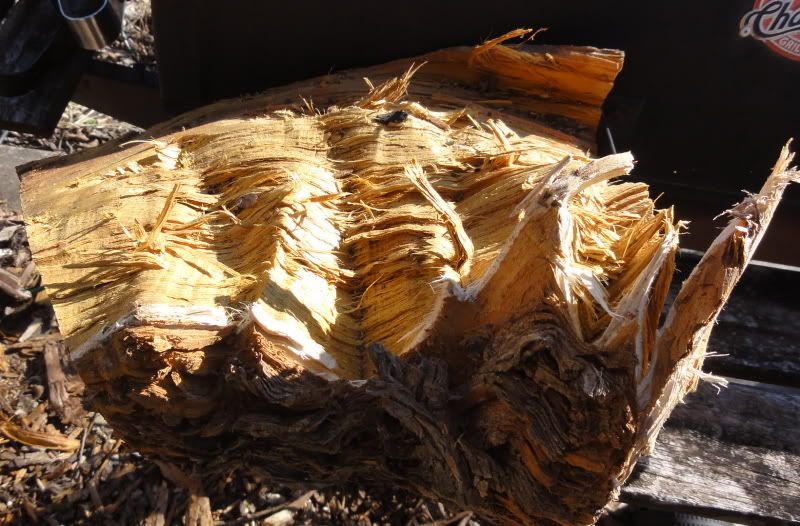I have cut well over 25 osage trees, made mostly bows out of it, more myths about this wood than any other wood out there. All the above stated stuff about it is simply not true.
Osage varies a good bit from tree to tree. Some may be as light as pine, other brittle and splintery, some dark and oily and the best is bright yellow and buttery.
I have cut osage as curly as the best maple but it is pretty rare.
Above all, osage DOES NOT warp after it cures and can be bent easily with heat.
As for the color change to ugly brown? You have to be kidding. Yellow at first, then light brown, then chestnut brown, then mahogany and finally a deep dark burgundy, almost black.
I love the stuff, and no, it doesn't dull your tools, cuts much easier with tools than hickory. If you see sparks coming off your chainsaw when you cut it green, the sparks are from some grit you hit in the bark, not from the wood.
Green osage cuts like butter, seasoned osage is pretty hard but nothing like it's mythical reputation.
Almost every osage tree I cut was straight. You might have to walk by 50 trees to find one worth cutting. You pick a lousy tree to cut then you might get lousy wood. There is a lot of work start to finish in harvesting a good piece of osage, I don't waste my time on a run of the mill tree.





